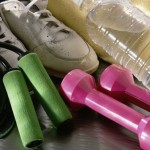Wow, the weight really creeps up – I know it did for me. When I was little I knew I wanted to be a big girl, but never a big girl! Are you ready to lose your weight? My clients who have the most success have these qualities. How about you?
1) They acknowledge they are getting bigger. You know how you put your jeans on and think “oh, it’s just ‘that time’—they’ll fit on Monday.” Several Mondays come and go and soon you can’t even zip the waist band over your thigh. When your thigh looks like a T-Rex drumstick it’s too late. Better to nip the weight-gain in the bud—get on the darn scale and accept what it tells you— then drop some chow and up the exercise.
2) They don’t blame their weight-gain on an unseen force. Damn I wish I had a nickel for every time I heard “I’m not eating that much” wedged between tiny bites of layer cake and handfuls of Mister Salties. Of course hormones and age play into it all of it, but so does drinking a bottle of Pinot Grigio. The devil is in the details and you are not possessed by Mario Bartolli’s evil munching doppelganger. The best losers know they are in control and take charge.
3) They know they can’t buy themselves thin. I do advocate hiring a personal trainer because you can really get hurt overtraining (and because I’m a personal trainer). But, you do have to be careful – if you lose weight, the snake-oil salesmen trying to sell you bars, supplements and shakes lose dough. There are a lot of people making money trying to “help” you. If you follow a well-crafted weight-loss plan you can work independently and you’ll save money over time. It’s simple; eat less, cook for yourself more and save money!
4) They don’t make excuses. If I heard a single person tell me, “wow, I eat and drink too much and haven’t been paying attention to what I’m eating – this is completely my fault,” I would faint in my tracks. As a note to anyone that may actually say this in an attempt to neutralize me: I’ve got my eye on you! The successful loser takes stock, changes those habits and moves on!
5) They take the advice of the professionals. There are lots of weight loss and exercise plans “out there”, but there is only one you. Mixing and matching food choices, exercises and swapping out bits and pieces of weight loss systems to suit your needs never works. The human body is a complex set of systems. If you stray too far on your own, there can be serious consequences besides not reaching your goals.
Would you like to be my next loser? Chime in and let me know what you think.




